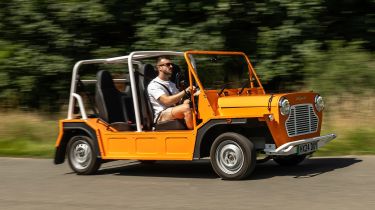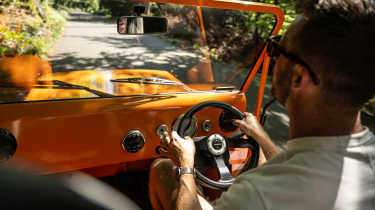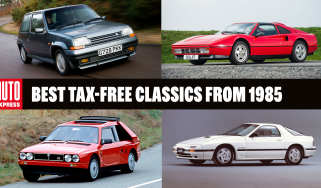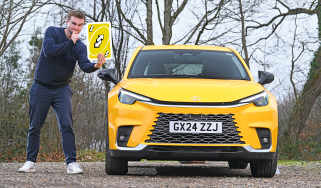Electric Moke review: the world’s least luxurious luxury car
Poorly equipped, expensive and with limited range, the Electric Moke is irrational to the point it’s almost irresistible
What is a car? Think about this question for more than a moment and you’ll realise that the invention of infotainment systems, removable drinks coolers and Vehicle-to-Grid (V2G) charging in recent years has somewhat stretched the original definition.
But what if we rewound the clock to the dawn of motoring, when the car was nothing more than a barebones, yet expensive luxury item that doubled as a means for travelling short distances and displaying your personal wealth? With this in mind, let us introduce you to the new Electric Moke.
For starters, let’s get a handful of things out of the way. First and foremost, the Electric Moke is not a ‘restomod’; it’s an all-new vehicle that’s been built and engineered in Britain, aiming to recapture the spirit of the 1960s original.
Secondly, this isn’t a ‘Mini Moke’ at all, but an ‘Electric Moke’. BMW holds the rights to the MINI brand, which it acquired from Rover Group back in 1996.
The Moke nameplate, on the other hand, was bought by Chinese manufacturer Chery – the conglomerate behind the likes of electric car brands Omoda and Jaecoo – which has been building new petrol-powered versions of the Moke since 2013. Now a standalone brand, Moke International went 100 per cent electric in 2022 and gained M1 Small Series approval in 2023, allowing the Electric Moke to be driven on the motorway in Europe.
Finally, and perhaps most importantly, unlike most reviews we’re going to state our verdict upfront: unless you’re a multi-millionaire, we don’t recommend you buy the Electric Moke. At just shy of £36,000 (no that’s not a typo), it’s little more than a toolshed on wheels for the same price as an electric family car. But it’s a charming toolshed, nonetheless.
As you can see, the design of the Moke has changed very little over the years, yet fundamental changes have needed to be made to meet modern roads, safety regulations… and portion sizes.
The new car is roughly 10 per cent larger than the original, although unless both cars were side-by-side, you probably wouldn’t notice. Easier to identify are the LED headlights and a more comprehensive rollover hoop. That’s not to mention the fake grille which looks pretty convincing from a distance, albeit a tad chintzy up close.
Peel away the Electric Moke’s steel and aluminium bodywork and that’s where you’ll find the greatest changes; the EV gets a more modern and sophisticated suspension setup, as well as proper disc brakes at the front – more on how they both affect the way the Electric Moke drives later.
Undeniably the most significant addition is that of a fully electric powertrain. The Electric Moke gets a 10.8kWh battery pack which the firm says will return an average of 54 miles on a charge – not enough for a cross-country trip, but ideal for popping down to the local shops, beach or artisanal vegan coffee shop.
The Electric Moke also boasts roughly 50 per cent more power than the original, with 44bhp being sent to the rear wheels. This extra oomph is necessary, though, as at around 800kg, the EV is quite a bit portlier than the British Motor Corporation petrol model. Moke International quotes a relatively zippy 0-30mph time of four-and-a-half seconds, primarily because the car is limited to 50mph and thus cannot hit the standard 62mph benchmark.
Contort yourself over the huge sidepods to step inside and you’ll find the Moke’s driving position hasn’t evolved much over six decades, either. I’m not exactly a giant (five-foot-ten, for reference) but even I struggled to get comfortable. The team at Moke International say they’re planning to install a longer set of seat rails in the future, but the awkward steering wheel angle of old Mini and Mini Moke models remains, with its upright positioning and lack of power steering evoking the sensation of using the turntable on a funfair teacup ride.
Out on the road is where the Electric Moke’s inherent juxtapositions between old and new are most stark; you don’t expect a car that feels this old to have such a level of get-up-and-go. That’s not to mention the left pedal travel which feels archaically long, yet when it finally bites the modern brakes give you an astonishing level of confidence and stopping power.
It’s pretty refined at higher speeds, too; the Moke gets up to its 50mph maximum with no fuss and the suspension, while firm, isn’t unsettled too easily. That said, the lack of any doors or wind deflectors may give a wonderful open-air feeling, but also means your hair will quickly be restyled to look like something out of a 70s glam rock band. In a car once driven by the world’s most famous spy, ironically have I never felt more conspicuous.
We pull over to have a chat with Moke International’s chief commerical officer, Robin Kennedy, and plug in the car to charge; with just a three-pin plug, the Electric Moke can be charged from zero to 80 per cent in just two hours.
Kennedy describes the Moke as an “antidote to the crazy world we live in”, explaining how while the car itself is just a bit of fun, the firm itself is serious about its commitment to the environment. He told us how he and the rest of Moke International’s team of 15 employees envisage building cars out of sustainable materials such as sugarcane and potentially even powering the car’s tiny battery via solar panels.
“We don’t want to greenwash,” he said. “ We don’t have a fully sustainable car yet, but we’re exploring the usage and reusage of sustainable materials.”
For the time being, things remain on a pretty small scale; from its factory in Northamptonshire, Moke International currently produces 500 cars per year, with a goal to eventually increase this number to 5,000. A partnership with the Blue Marine Foundation charity has previously led to two Electric Mokes being auctioned off at €250,000 a piece – one of which was bought by royalty.
Yet while even regular versions of the Electric Moke are pretty expensive, Moke International has a plan for what it describes as “democratising” access to the iconic Moke brand. Partnerships with various hotels across the world enable admittedly well-off holidaygoers to experience the Moke for themselves for as little as £150 per day. The Moke International moto parc currently sits at around 80 per cent private ownership, with the push towards the rental market intending to push up fleet market share.
For that reason, the Electric Moke is perhaps the least luxurious luxury car there is. Barebones, yet expensive to buy outright, the Moke EV’s intended availability as a vacation indulgence for the influencers and morbidly curious amongst us means the beloved icon could perhaps become more accessible than it’s ever been.
For lack of a better phrase, the Electric Moke is a fantastically flawed hoot and although the Surrey Hills on a cloudy weekday weren’t its intended stomping grounds, we wouldn't say no to an all-expenses-paid trip out to the Caribbean or Key West to experience the EV Moke lifestyle for real…
History of the Mini Moke
Arriving on the scene back in 1964, the Mini Moke was born out of the British Motor Corporation’s failure to produce a cheap and lightweight off-road vehicle for the British army that could be dropped into battle via a parachute.
The work of original Mini designer, Alex Issoginis, the ‘Buckboard’, as it was originally called, was discounted for its low ground clearance and lack of power which compromised its off-road capabilities.
Adopting not only half of its name but also its running gear from the aforementioned Austin Mini, the Mini Moke was instead sold as a civilian vehicle on and off until 1993 in various markets, gaining cult status as the wheels of choice for the likes of the Beach Boys, the Beatles, Brigitte Bardot and even James Bond in the film Live and Let Die, as well as several others.










